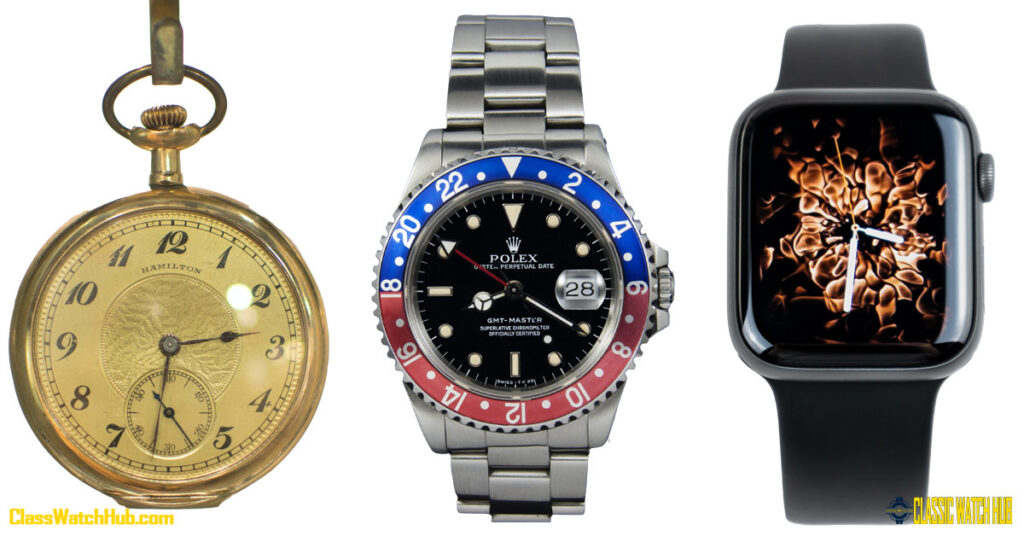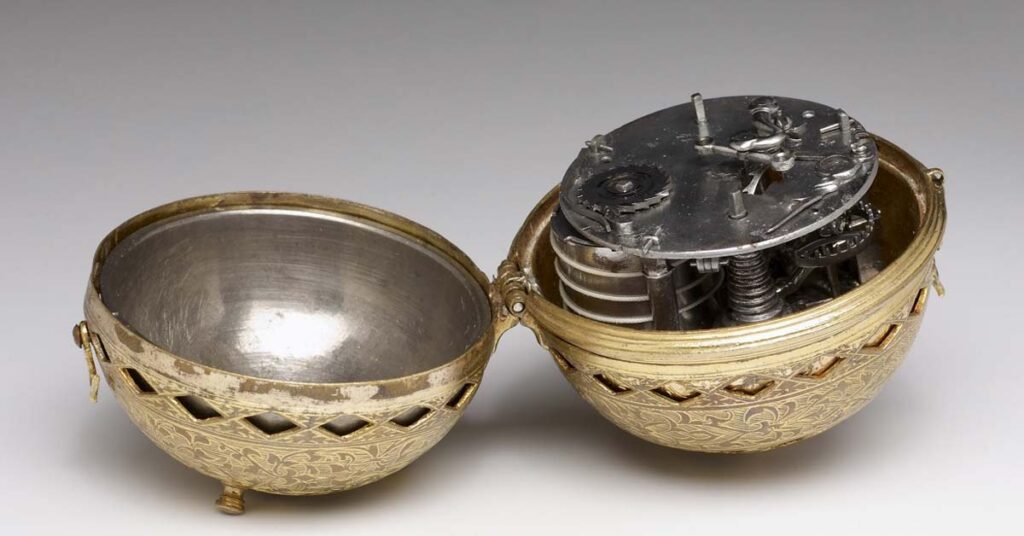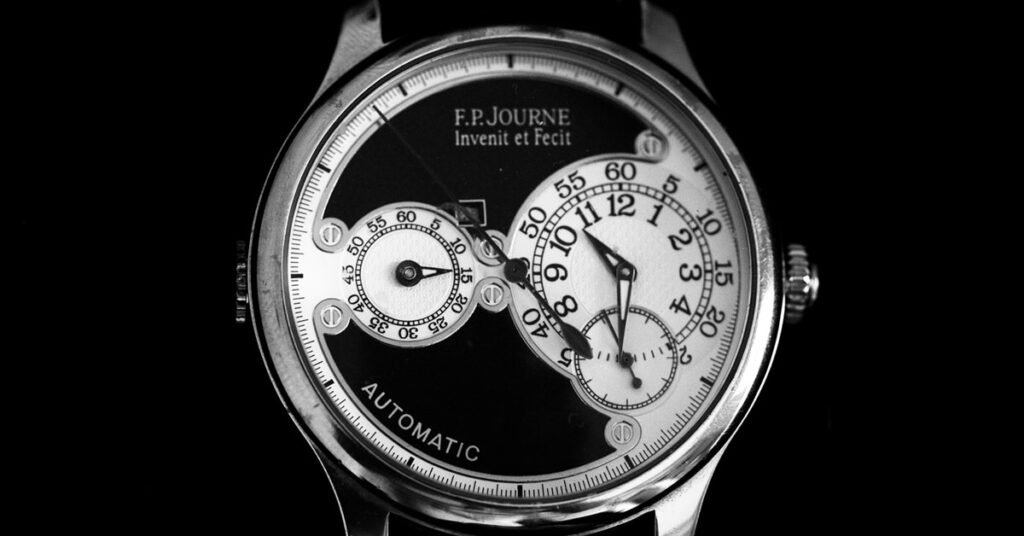
Table of Contents
ToggleUnwinding Time: The Pioneers and Innovations That Shaped Horology
Welcome, watch enthusiasts and collectors, to a journey through time—literally! When we talk about iconic watchmakers, we’re not just discussing brands; we’re delving into the very essence of horology, the art and science of measuring time. These watchmakers have not only crafted timepieces but have also shaped the way we perceive and interact with time itself.
The objective of this article is clear-cut yet profound: to explore the rich history and ground-breaking contributions of iconic watchmakers. We’ll be setting our sights on renowned brands like Omega, Rolex, Breitling, CWC, and Seiko. But that’s not all! We’ll also be paying homage to the unsung heroes and pioneers of watchmaking—figures like John Harrison, Thomas Mudge, and Abraham Breguet, who have left an indelible mark on this intricate field.
So, why should you care about the history of iconic watchmakers? Whether you’re a seasoned collector or a novice enthusiast, understanding the lineage of these brands and innovations can deepen your appreciation for your own collection, or even guide you in making your next acquisition.
Who Invented the Wristwatch?
While Abraham-Louis Breguet is often hailed for crafting the first wristwatch for Caroline Murat, the Queen of Naples, in 1810, wristwatches didn’t truly gain widespread acceptance until the early 20th century. This surge in popularity was fuelled by advancements in wristwatch durability and the rise of sports and activities that made pocket watches impractical.
In a pivotal moment for wristwatches, Louis Cartier created the Cartier Santos in 1904 for his friend, Brazilian aviator Alberto Santos-Dumont. Frustrated with the limitations of pocket watches while flying, Santos-Dumont sought a more convenient and safer alternative. The Cartier Santos met this need and quickly became a commercial success, marking it as one of the first modern wristwatches.
The First World War further accelerated the adoption of wristwatches. Soldiers found them indispensable for coordinating maneuvers while also handling weapons and equipment. Post-war, wristwatches became a standard accessory for both men and women, leading to the decline of pocket watches.
So, while Breguet may have pioneered the concept, it was the collaborative efforts of Louis Cartier and Alberto Santos-Dumont that truly brought wristwatches into mainstream fashion and utility.
Table of Contents:
- The Early Beginnings
- The Lever and the Tourbillon
- The Transition to Wristwatches
- The 20th Century Milestones
- Technological Advancements
- The Modern Era
- The Collector’s Perspective
- The Future and Beyond
Strap in (pun intended!) as we wind through the gears and springs of horological history, exploring the milestones that have made these watchmakers truly iconic.
The Early Beginnings

The Genesis of Timekeeping
Before we dive into the world of iconic watchmakers, let’s take a step back—way back—to the dawn of timekeeping. The concept of measuring time has been a human preoccupation for millennia, from ancient sundials to water clocks. However, it was German clockmaker Peter Henlein who revolutionized the field in the 16th century by inventing clock-watches. These were the precursors to the pocket watches and wristwatches we know today.
Key Milestones in Early Timekeeping
| Year | Innovation | Inventor |
|---|---|---|
| 16th Century | Clock-Watches | Peter Henlein |
| 18th Century | Marine Chronometer | John Harrison |
| 18th Century | Lever Escapement | Thomas Mudge |
John Harrison and the Marine Chronometer
Fast forward to the 18th century, and we meet John Harrison, a self-taught carpenter and clockmaker. Harrison took on the challenge of solving the “longitude problem,” a critical issue for maritime navigation. His solution? The marine chronometer. This ground breaking invention allowed sailors to determine their longitude at sea with unprecedented accuracy. One of Harrison’s most notable contributions to the chronometer was the “grasshopper escapement,” a low-friction mechanism that greatly improved timekeeping accuracy. Over time, marine chronometers became smaller and more practical, making them indispensable tools for navigation.
Thomas Mudge’s Timeless Contribution: The Lever Escapement
Around the same period, another luminary emerged: Thomas Mudge. When we talk about the lever escapement, we’re discussing a mechanism so fundamental that it’s still widely used in mechanical watches today. Invented by Thomas Mudge in the 18th century, the lever escapement was nothing short of revolutionary. It replaced the older, less efficient verge escapement and brought about a new era of accuracy in timekeeping.
The genius of the lever escapement lies in its simplicity and efficiency. It consists of a lever with two pallets that engage with an escape wheel. This interaction allows for a more controlled and consistent release of energy from the mainspring, leading to improved accuracy. The lever escapement became the industry standard and set the stage for the precise, reliable watches we have today.
List: Key Features of the Lever Escapement
- Controlled release of energy
- Improved timekeeping accuracy
- Replaced older, less efficient escapements
- Still widely used in modern mechanical watches
Abraham-Louis Breguet: The Master of Complexity

Abraham-Louis Breguet Watch CC BY-SA 3.0
If Thomas Mudge simplified timekeeping, Abraham-Louis Breguet elevated it to an art form. Breguet’s contributions to watchmaking are numerous, but two stand out: the tourbillon and the “Breguet overcoil.”
The tourbillon, French for “whirlwind,” is a rotating cage that houses the escapement and balance wheel. This rotation compensates for positional errors caused by gravity, enhancing the watch’s overall accuracy. While not strictly necessary in modern wristwatches, the tourbillon remains a symbol of craftsmanship and complexity, often featured in high-end, luxury timepieces.
The “Breguet overcoil” is another ingenious invention. It’s a modified hairspring that improves the balance wheel’s isochronism, ensuring that the watch keeps time consistently regardless of its position. This innovation has been widely adopted and remains a staple in high-quality mechanical watches.
Abraham Breguet’s Key Innovations
| Innovation | Description | Impact |
|---|---|---|
| Tourbillon | Rotating cage for escapement and balance wheel | Improved positional accuracy |
| Breguet Overcoil | Modified hairspring | Enhanced isochronism |
We’ve delved into the lever escapement and the tourbillon—two innovations that have had a profound impact on watchmaking. While Thomas Mudge’s lever escapement laid the foundation for modern mechanical watches, Abraham Breguet’s tourbillon and overcoil elevated watchmaking to new heights of complexity and precision. These contributions have not only stood the test of time but continue to influence and inspire the industry today.
Up next, we’ll explore the fascinating transition from pocket watches to wristwatches, and the key figures who made it happen. Stay tuned!
We’ve scratched the surface of the early beginnings of timekeeping and watchmaking. These pioneers laid the groundwork for the iconic brands and innovations that would follow, shaping the industry into what it is today. Their contributions serve as a testament to human ingenuity and the relentless pursuit of precision.
As we delve deeper into the intricacies of horology, exploring the transition from pocket watches to wristwatches and the milestones that have defined the 20th century and beyond.
The Transition to Wristwatches

The Dawn of the Wristwatch Era
The transition from pocket watches to wristwatches wasn’t just a shift in design; it was a cultural and technological revolution. While pocket watches had their charm and intricacy, the 20th century demanded something more practical and accessible. The first wristwatch was produced in 1810, but it wasn’t until the early 1900s that wristwatches began to gain widespread acceptance.
Key Milestones in the Transition to Wristwatches
- First wristwatch produced in 1810
- Cartier Santos introduced in 1910
- Breitling Chronograph launched in 1915
- Rolex founded in 1919
Webb C. Ball: The Man Who Set the Standard
Webb C. Ball played a pivotal role in the transition to wristwatches. He was instrumental in standardizing timekeeping for American railroads after a tragic train collision caused by a watch that was running late. Ball introduced strict timekeeping standards and inspections, which eventually led to the widespread adoption of wristwatches over pocket watches for their ease of use and reliability.
George Daniels and the Co-Axial Escapement
Another key figure in this transition was George Daniels, a British watchmaker who invented the co-axial escapement. This innovation reduced the sliding friction inherent in the lever escapement, making watches even more accurate and reducing the need for lubrication. Daniels’ co-axial escapement was a significant advancement, and it was eventually adopted by Omega, bringing this innovation to a broader market.
Table: Key Figures in the Transition to Wristwatches
| Key Figure | Contribution | Impact |
|---|---|---|
| Webb C. Ball | Timekeeping standards for American railroads | Widespread adoption of wristwatches |
| George Daniels | Co-Axial Escapement | Improved accuracy and reduced need for lubrication |
Iconic Models That Defined the Era
The early 20th century saw the introduction of several iconic wristwatch models that further solidified the transition from pocket watches. These include the Cartier Santos in 1910, designed for aviator Alberto Santos-Dumont; the Breitling Chronograph in 1915, which introduced a separate pusher for the chronograph function; and the Rolex Oyster in 1926, the world’s first waterproof wristwatch.
Iconic Models and Their Features
- Cartier Santos: First wristwatch designed for aviation
- Breitling Chronograph: Introduced separate pusher for chronograph
- Rolex Oyster: First waterproof wristwatch
In this section, we’ve explored the fascinating transition from pocket watches to wristwatches, a shift that was driven not just by technological innovation but also by societal needs and iconic personalities. From Webb C. Ball’s standardization efforts to George Daniels’ co-axial escapement, the move to wristwatches was a collaborative effort that forever changed the landscape of timekeeping.
As we move forward, we’ll delve into the milestones of the 20th century that have left an indelible mark on the watchmaking industry.
The 20th Century Milestones

Deutsches Uhrenmuseum by Museumsfoto CC BY 3.0 DE
The Roaring Twenties: A Decade of Innovation
The 1920s were a transformative decade for wristwatches. John Harwood designed the first automatic wristwatch with an oscillating weight in 1922, paving the way for self-winding mechanisms. In 1926, Rolex introduced the Oyster, the world’s first waterproof wristwatch, which also featured an automatic movement. These innovations set the stage for the modern wristwatch as we know it today.
Table: Key Innovations of the 1920s
| Year | Innovation | Brand/Inventor |
|---|---|---|
| 1922 | First Automatic Wristwatch | John Harwood |
| 1926 | Oyster & Automatic Movement | Rolex |
The 1930s: A Time for Technical Mastery
The 1930s saw further advancements, including the invention of the winding mechanism in 1926 and the introduction of the first Pilot’s Watch in 1936. LeCoultre & Cie. and Jaeger introduced the Reverso in 1931, a watch with a reversible case, designed to protect the dial during polo matches. Additionally, Udo Adelsberger and Adolf Scheibe developed various quartz watches in 1932, marking the beginning of electronic timekeeping.
Notable Innovations of the 1930s
- Winding Mechanism (1926)
- LeCoultre & Cie. and Jaeger Reverso (1931)
- First Pilot’s Watch (1936)
- Quartz Watches (1932)
The Mid-Century Revolution
The mid-20th century was a period of rapid innovation. American Isidor Isaac Rabi received the Nobel Prize in Physics in 1944 for his magnetic resonance method, which later formed the basis for the development of the atomic clock. The Blancpain Fifty Fathoms, introduced in 1953, became the archetype for modern dive watches.
The Late 20th Century: A New Wave of Innovation
The late 20th century was no less ground breaking. The first automatic chronographs were introduced in 1969, including the Seiko 6139, Caliber 11, and Zenith El Primero. Audemars Piguet introduced the Royal Oak in 1972, a luxury sports watch that broke away from traditional watch design. The 1980s saw significant business moves, with Jean-Claude Biver and Jacques Piguet purchasing Blancpain in 1983, and the formation of the Swatch Group in the same year.
Key Milestones of the Late 20th Century
| Year | Milestone | Brand/Entity |
|---|---|---|
| 1969 | First Automatic Chronographs | Seiko, Caliber 11, Zenith |
| 1972 | Royal Oak | Audemars Piguet |
| 1983 | Blancpain Purchase & Swatch Group Formation | Jean-Claude Biver, Jacques Piguet, Swatch Group |
In this section, we’ve journeyed through the milestones that defined the 20th century in watchmaking. From the innovations of the Roaring Twenties to the business moves of the 1980s, each decade brought its own set of challenges and breakthroughs. These milestones not only shaped the industry but also enriched our understanding and appreciation of timekeeping as both a science and an art.
Next, we’ll look into the technological advancements that have continued to push the boundaries of what’s possible in watchmaking.
Technological Advancements of Watches

Photo by Paul Cuoco on Unsplash
Quartz Revolution: A New Era of Timekeeping
The introduction of quartz technology in the late 20th century was nothing short of a revolution in watchmaking. Developed by Udo Adelsberger and Adolf Scheibe in 1932 at the “Physikalisch-Technische Reichsanstalt” (Imperial Physical Technical Institute – PTR), quartz watches offered unparalleled accuracy compared to their mechanical counterparts. The quartz movement uses a quartz crystal oscillator, vibrating at a specific frequency when voltage is applied, to keep time. This innovation led to the mass production of affordable, highly accurate watches, forever changing the landscape of the watch industry.
Quartz vs Mechanical Watches
| Feature | Quartz Watches | Mechanical Watches |
|---|---|---|
| Accuracy | High | Moderate to High |
| Maintenance | Low | High |
| Battery Life | Long | N/A (manual or automatic winding) |
Atomic Clocks: The Pinnacle of Precision
The development of the atomic clock was another monumental achievement in timekeeping. American physicist Isidor Isaac Rabi received the Nobel Prize in Physics in 1944 for his magnetic resonance method, which later became the basis for atomic clocks. These clocks use the vibrations of atoms to keep time and are the most accurate timekeeping devices known to man. While not directly related to wristwatches, the atomic clock sets the standard for global timekeeping and has implications for various technologies, including GPS.
Applications of Atomic Clocks
- Global Positioning System (GPS)
- Telecommunications
- Scientific Research
The Advent of Smartwatches
The 21st century saw the advent of smartwatches, a blend of traditional timekeeping and modern technology. These devices offer a range of functionalities, from fitness tracking to notifications, and even mobile payments. While purists may argue that smartwatches lack the craftsmanship of mechanical watches, there’s no denying their impact on the industry and their appeal to a new generation of consumers.
Smartwatches vs Traditional Watches
| Feature | Smartwatches | Traditional Watches |
|---|---|---|
| Functionality | Multi-functional | Timekeeping, sometimes additional complications |
| Battery Life | Short (daily/weekly charging) | Long (years for quartz, manual/automatic winding for mechanical) |
| Craftsmanship | Varies | Often High |
We have briefly explored the technological advancements that have shaped and continue to influence the watchmaking industry. From the quartz revolution to the advent of smartwatches, each innovation has left its mark, challenging traditional norms and pushing the boundaries of what’s possible in timekeeping.
As we look to the future, it’s clear that technology will continue to play a pivotal role in the evolution of watches, whether it’s through advancements in materials, mechanics, or digital functionalities.
The Modern Era of the Wrist Watch

Photo by Swaminathan (CC-BY-2.0)
The Rise of Independent Watchmakers
The modern era has seen a resurgence of independent watchmakers who are challenging the status quo. These artisans are focusing on craftsmanship, innovation, and limited-edition models that appeal to collectors and enthusiasts alike. Brands like MB&F, F.P. Journe, and Richard Mille have carved out a niche for themselves, offering unique designs and complications that set them apart from mainstream brands.
List: Key Independent Watchmakers and Their Unique Features
- MB&F: Futuristic designs and complex movements
- F.P. Journe: In-house movements and traditional craftsmanship
- Richard Mille: High-tech materials and avant-garde designs
Sustainability: The New Frontier
Sustainability has become a buzzword in many industries, and watchmaking is no exception. Brands are increasingly focusing on sustainable practices, from sourcing ethical materials to reducing their carbon footprint. For example, Panerai has introduced watches with cases made from recycled titanium, and Omega has launched a line of watches featuring straps made from recycled fishing nets.
Table: Brands and Their Sustainable Initiatives
| Brand | Sustainable Initiative | Material Used |
|---|---|---|
| Panerai | EcoTitanium Cases | Recycled Titanium |
| Omega | Nato Straps | Recycled Fishing Nets |
The Digital Transformation
The modern era has also seen a significant shift towards digital platforms. Brands are leveraging social media, e-commerce, and digital storytelling to reach a global audience. Virtual try-ons, augmented reality experiences, and online customization options are becoming standard features, enhancing the consumer experience and meeting the demands of a digital-first generation.
List: Digital Innovations in Watch Retail
- Virtual Try-Ons
- Augmented Reality Experiences
- Online Customization Options
The Collector’s Market: Investment and Rarity
Watches are no longer just tools for timekeeping; they’ve become investment pieces and status symbols. Limited-edition releases, vintage finds, and iconic models like the Rolex Daytona or Patek Philippe Nautilus have seen their values skyrocket in recent years. Auction houses like Sotheby’s and Christie’s regularly feature rare watches that fetch astronomical prices, further fuelling the collector’s market.
Table: Iconic Models and Their Investment Value
| Model | Brand | Approximate Current Value |
|---|---|---|
| Rolex Daytona | Rolex | Varies, often upwards of $20,000 |
| Patek Philippe Nautilus | Patek Philippe | Varies, often upwards of $50,000 |
In this section, we’ve explored the multifaceted landscape of modern watchmaking. From the rise of independent watchmakers to the focus on sustainability and digital transformation, the industry is evolving at a rapid pace. Add to this the burgeoning collector’s market, and it’s clear that watches have transcended their original purpose, becoming objects of art, investment, and technological innovation.
Up next, we’ll delve into the collector’s perspective, examining what makes a watch truly “collectible” and how iconic brands and innovations fit into this narrative.
The Watch Collector’s Perspective

The Allure of Vintage Watches
For many collectors, vintage watches hold a special allure. These timepieces offer a glimpse into the past, capturing the essence of a bygone era. Whether it’s the patina on the dial or the craftsmanship of the movement, vintage watches tell a story that new watches simply can’t. Brands like Omega, Rolex, and Breitling have vintage models that are highly sought after, not just for their aesthetic appeal but also for their investment potential.
Key Factors That Make a Vintage Watch Collectible
- Rarity
- Condition
- Provenance
- Historical Significance
The Emotional Connection
Collecting watches often goes beyond mere investment or appreciation of craftsmanship; it’s an emotional journey. Many collectors seek models that have personal significance, such as a watch from the year of their birth or a model that commemorates a historical event. This emotional connection adds another layer of value to the watch, making it priceless in the eyes of the collector.
Watches with Emotional or Historical Significance
| Model | Event/Significance | Emotional Value |
|---|---|---|
| Omega Speedmaster | First watch on the moon | High |
| Rolex GMT-Master | Designed for Pan-Am pilots | Moderate |
The Investment Angle
In recent years, watch collecting has also become a lucrative investment avenue. Limited-edition releases and iconic models often appreciate in value over time, offering substantial returns. The Rolex Daytona and the Patek Philippe Nautilus are prime examples of watches that have become investment pieces, fetching astronomical prices at auctions.
Watches Known for Investment Value
- Rolex Daytona
- Patek Philippe Nautilus
- Audemars Piguet Royal Oak
The Role of Community and Knowledge Sharing
The modern collector is part of a global community, connected through online forums, social media, and events. Knowledge sharing is rampant, with collectors and enthusiasts discussing the minutiae of different models, movements, and brands. This sense of community not only enriches the collecting experience but also serves as a valuable resource for authentication and valuation.
Popular Online Platforms for Watch Collectors
| Platform | Purpose | User Base |
|---|---|---|
| Watchuseek | General Discussion & Sales | Large |
| Reddit’s r/Watches | Discussion & Reviews | Moderate to Large |
| Showcasing Collections | Large |
In this section, we’ve delved into the collector’s perspective, exploring the various factors that make a watch collectible. From the allure of vintage models to the emotional and investment angles, collecting watches is a multifaceted endeavour. The role of community and knowledge sharing further enriches this journey, making watch collecting not just a hobby but a lifelong passion.
As we wrap up, we’ll look towards the future, pondering what lies ahead for the world of watchmaking and collecting.
The Future of Watches and Beyond

The Convergence of Technology and Craftsmanship
As we look to the future, one trend seems inevitable: the increasing convergence of technology and traditional craftsmanship. While smartwatches and wearables offer a range of functionalities, there’s a growing demand for hybrid models that combine the best of both worlds. Imagine a mechanical watch with a heart rate monitor or a smartwatch with a tourbillon complication. The possibilities are endless and exciting.
Potential Hybrid Features
- Heart Rate Monitor in a Mechanical Watch
- GPS Functionality in a Luxury Timepiece
- Solar Charging in Traditional Models
Sustainability as a Core Principle
Sustainability is more than just a trend; it’s becoming a core principle for many watch brands. As consumers become more eco-conscious, the industry will likely see a surge in sustainable materials and practices. From solar-powered movements to straps made from recycled materials, sustainability will play a significant role in shaping the future of watchmaking.
Future Sustainable Initiatives
| Initiative | Description | Potential Impact |
|---|---|---|
| Solar-Powered Movements | Watches powered by solar cells | Reduced battery waste |
| Upcycled Materials | Straps and cases made from recycled materials | Lower carbon footprint |
Customization and Personalization
The future of watchmaking is also likely to be heavily influenced by the growing demand for customization and personalization. With advances in 3D printing and other manufacturing technologies, consumers may soon be able to design their own watches, choosing everything from the case material to the type of escapement.
Customization Options
- Case Material (Titanium, Ceramic, etc.)
- Dial Design (Colours, Markers, Hands)
- Type of Escapement (Lever, Co-Axial, etc.)
The Role of Artificial Intelligence and Big Data
Artificial Intelligence (AI) and Big Data are already making inroads into various industries, and watchmaking is no exception. These technologies could revolutionize everything from supply chain management to customer service. AI could also play a role in the design process, helping to create watches that are both aesthetically pleasing and mechanically sound.
Applications of AI and Big Data
| Application | Description | Potential Impact |
|---|---|---|
| Supply Chain Optimization | AI algorithms for efficient sourcing and distribution | Cost reduction |
| Customer Service | Chatbots and automated customer service solutions | Improved customer experience |
In this final section, we’ve explored the future of watchmaking, touching on the trends and technologies that are likely to shape this fascinating industry. From the convergence of technology and craftsmanship to the growing emphasis on sustainability and customization, the future holds exciting possibilities for both watchmakers and collectors.
As we continue to marvel at the intricate dance of gears and springs that measure the passage of time, one thing is clear: the world of watchmaking is ever-evolving, and its future is as bright as a freshly polished crystal.
Thank you for joining us on this journey through time and innovation. Until next time, keep watching!

